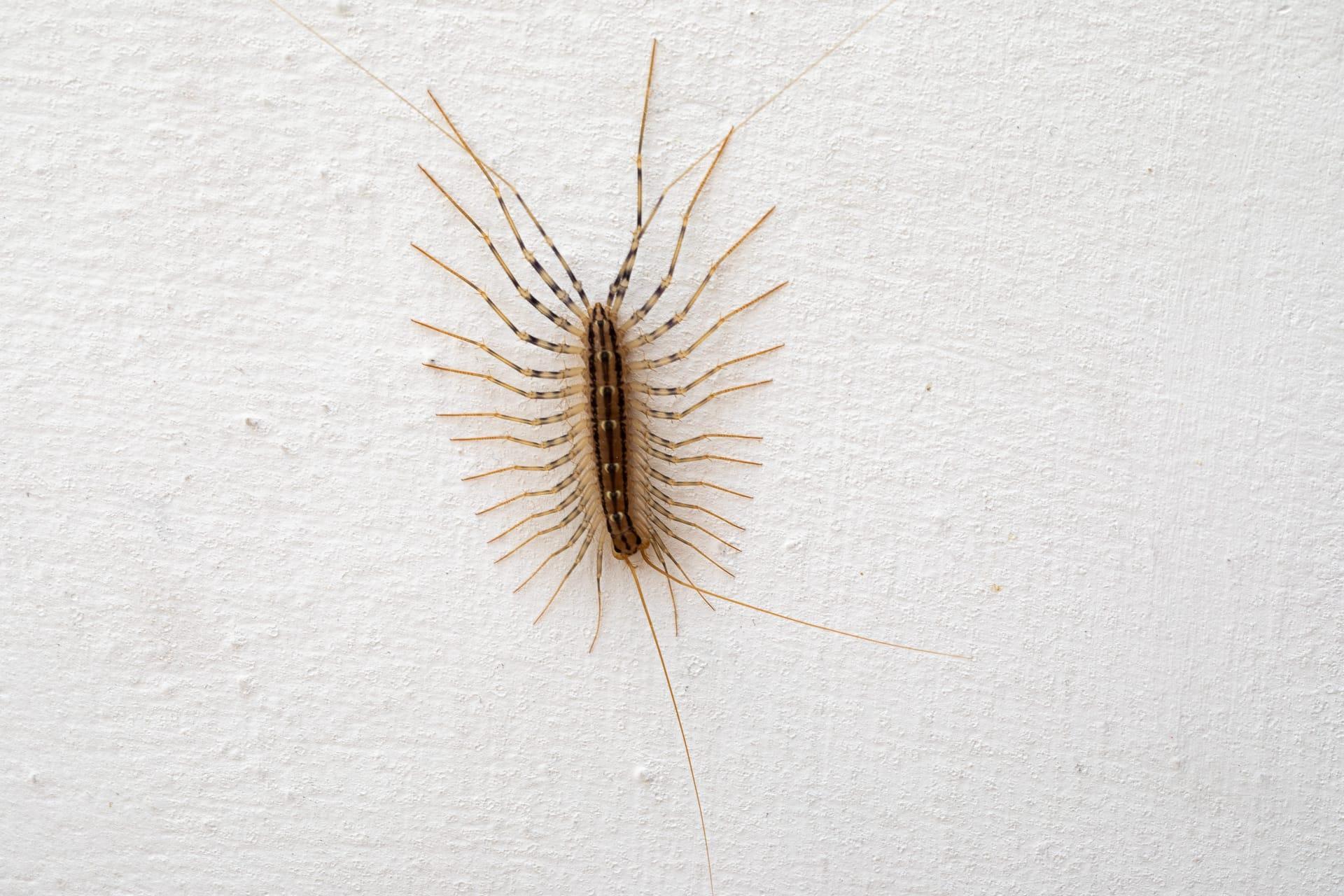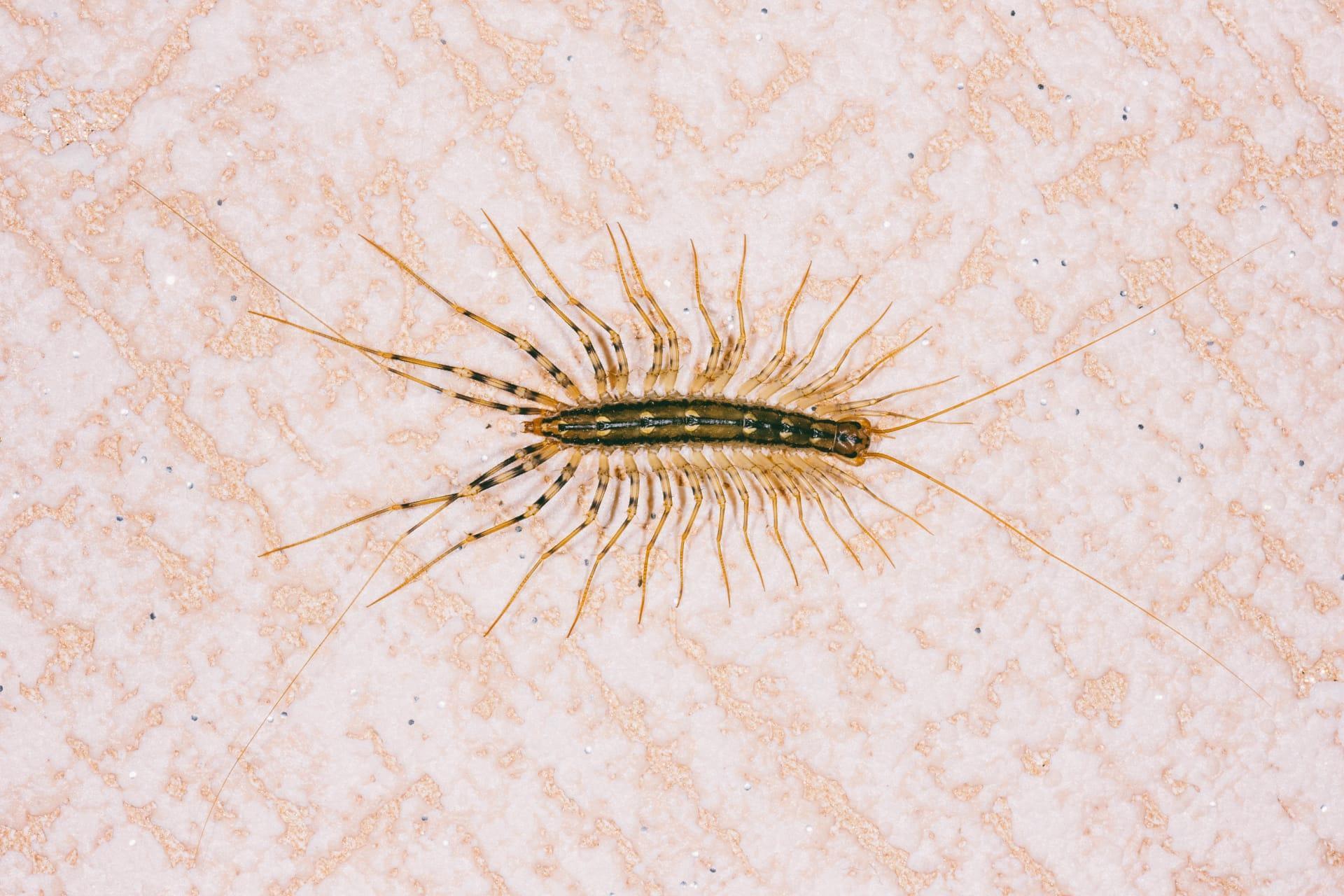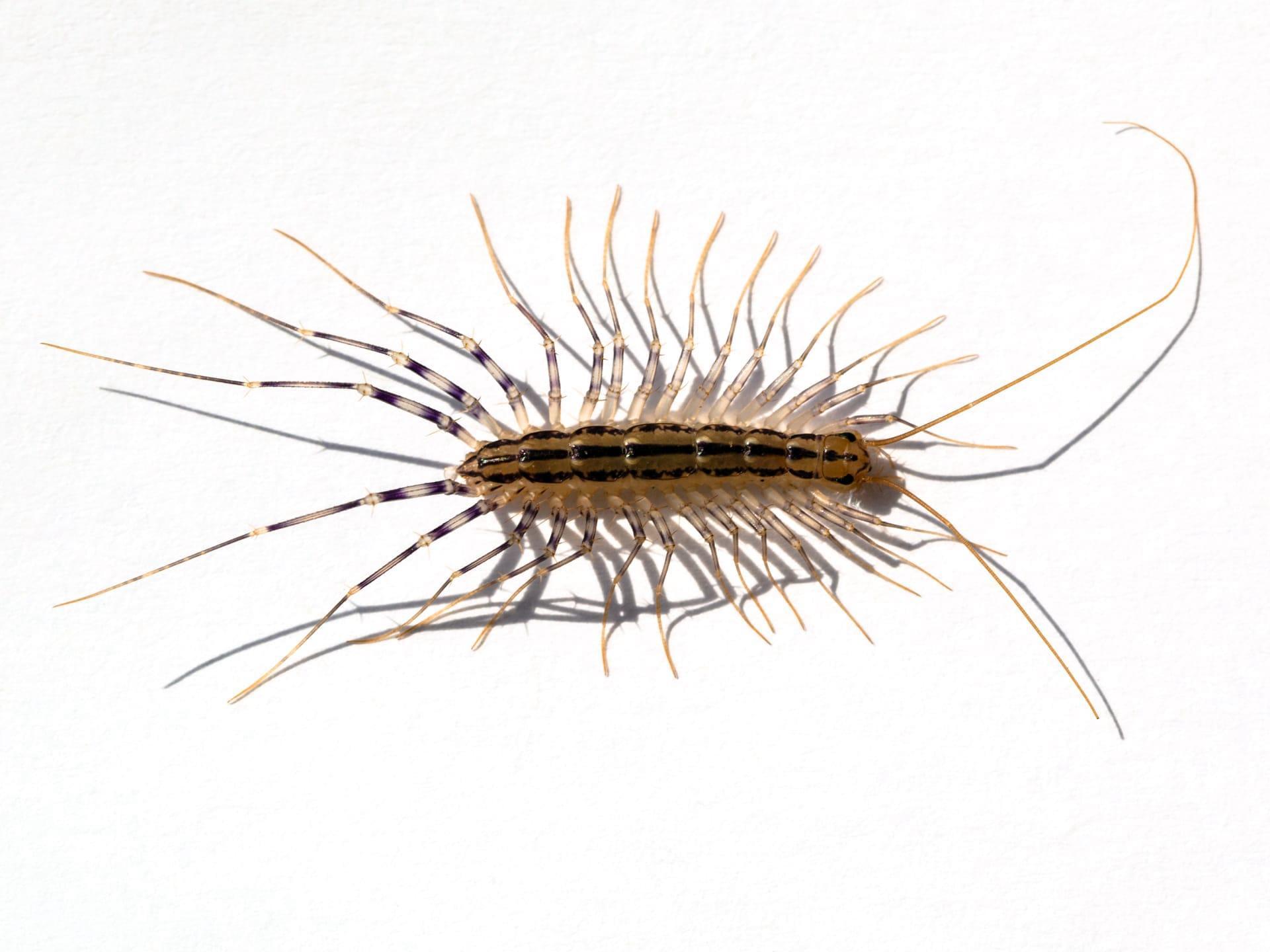1
House centipedes, known scientifically as Scutigera coleoptrata, are unique for their speedy movement, clocking in at about 1.3 feet per second. This agility helps them hunt other household pests, making them a natural form of pest control. They have a peculiar body structure, with 15 pairs of long, slender legs radiating from a segmented body, giving them a distinct, sometimes alarming appearance. Despite their name, they're not true centipedes; they belong to a different group of arthropods known as chilopods.
These creatures are nocturnal hunters, equipped with compound eyes containing a large number of ommatidia (individual eye units), approximately 200, which is unusually high for centipedes. This provides them with excellent night vision, aiding their ability to navigate and hunt in the dark. Their diet primarily consists of insects such as spiders, bed bugs, termites, cockroaches, silverfish, ants, and other arthropods. Their hunting style involves using their long legs to ensnare prey and then injecting venom to immobilize it.

2
House centipedes have a fascinating reproductive process. The male does not directly transfer sperm to the female. Instead, he deposits a spermatophore (a capsule containing sperm) on the ground, which the female then picks up. This indirect method of reproduction is a unique feature among many arthropods. The female house centipede can lay anywhere from 35 to 150 eggs during her lifetime, which she usually deposits in damp, protected areas.
Another interesting fact about house centipedes is their lifespan, which is unusually long for an insect. They can live up to 3 to 7 years, a significant period compared to other small arthropods. Throughout their life, they undergo numerous molts. Unlike other centipedes, they continue to molt even after reaching sexual maturity. During each molt, they add segments and legs, starting with only four pairs of legs when they hatch.

3
House centipedes possess a pair of venomous claws, known as forcipules, located right below their head. These are modified legs, unique to centipedes, used to capture and paralyze their prey before consuming them. However, their venom is not harmful to humans and at most can cause a mild irritation similar to a bee sting, unless one is allergic or particularly sensitive. Despite their fierce appearance and venomous nature, they are generally harmless to humans and prefer to avoid contact.
Interestingly, house centipedes are capable of regenerating lost legs. If they lose a leg due to predation or injury, they can grow a new one during their next molt. This regenerative ability is particularly important for them, as their legs are not only vital for movement but also play a key role in hunting and sensory perception. The legs are covered in tiny hairs that detect vibrations and air currents, aiding them in sensing their environment and locating prey.

4
House centipedes are adept at adapting to various environments, which is why they are found all over the world. Originally native to the Mediterranean region, they have spread to many parts of the world, including North America, Europe, Asia, and the Middle East. They prefer to reside in moist, sheltered areas like basements, bathrooms, and beneath logs or stones outdoors. Their presence in a home often indicates a larger problem with other household pests, which they hunt.
Despite their predatory nature, house centipedes themselves can fall prey to other household predators. Cats, for example, often chase and play with them, sometimes resulting in the centipede’s death. They are also preyed upon by larger arthropods, birds, and small mammals. Their speed and agility, however, make them difficult targets, and they often use rapid movements and their ability to swiftly navigate through tiny spaces to escape predators.

5
House centipedes exhibit a behavior known as autotomy, the ability to self-amputate a leg to escape predators. When caught, they can detach one or more of their legs, which continue to twitch and wriggle, distracting the predator and allowing the centipede to escape. The lost leg can be regenerated over time through molting.
Finally, house centipedes play a crucial ecological role, both indoors and outdoors. By feeding on a variety of unwanted pests, they help control the population of insects that can be harmful to humans and plants. This pest control service they provide is often underappreciated, yet it's a natural and chemical-free way to manage pest populations in homes and gardens. Their presence, while sometimes unsettling, is a sign of a healthy ecosystem and their contribution to controlling pests is invaluable.